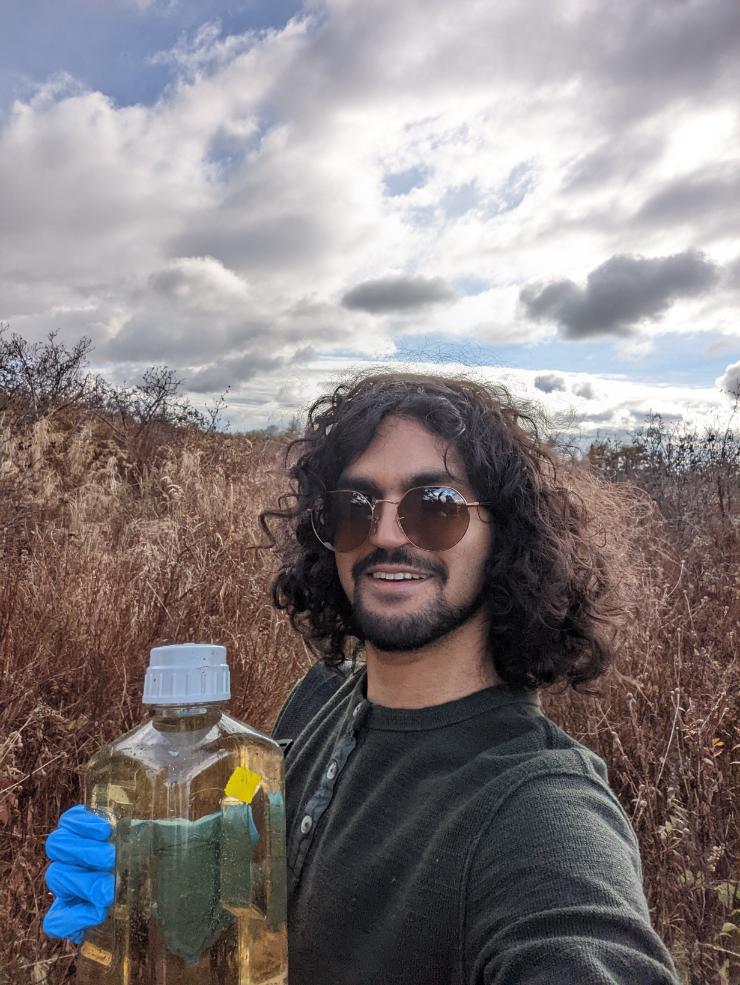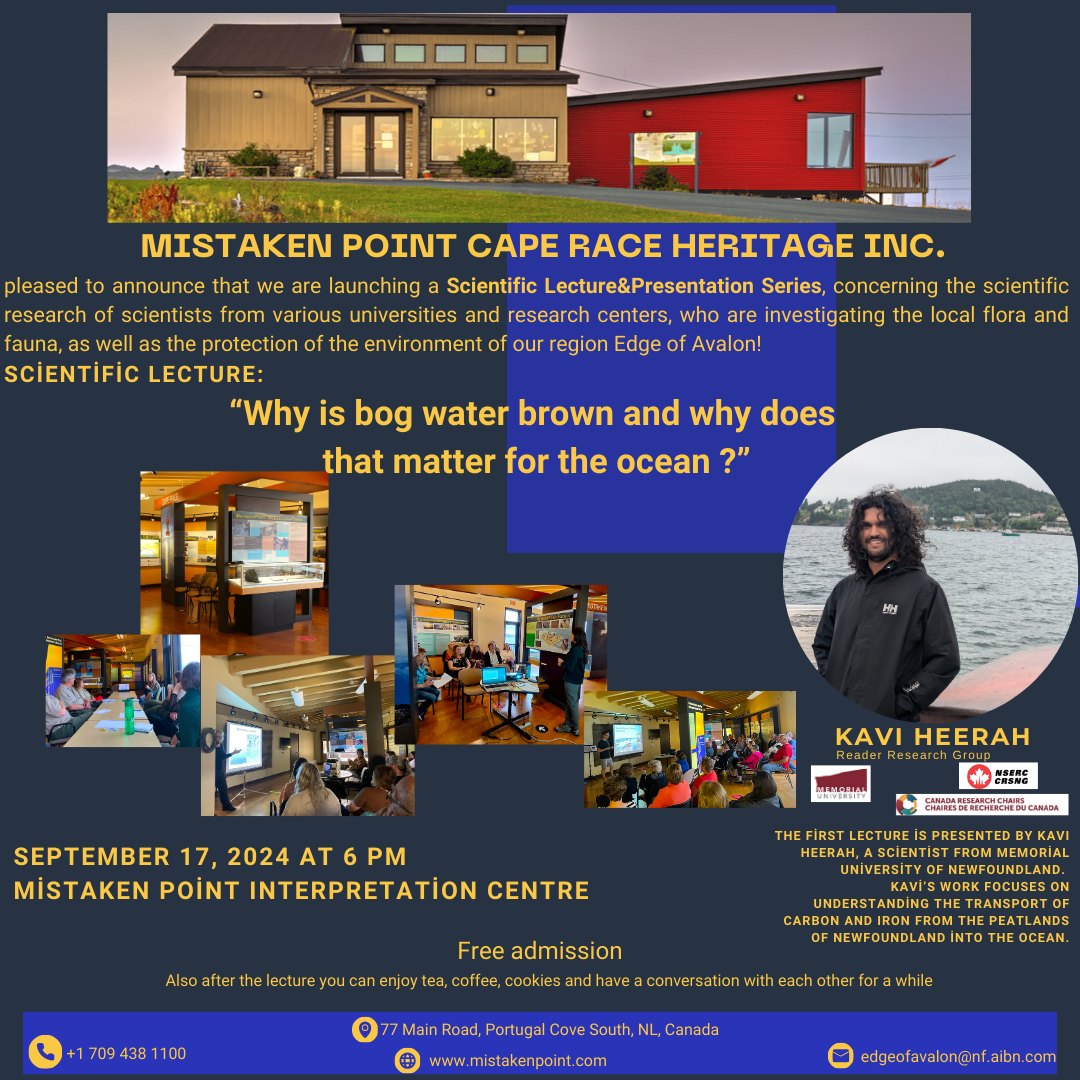Kavi Heerah

Doctoral Candidate, Environmental Science
Tell us about your research interests.
I am in the Reader lab with Dr. Heather Reader (Chemistry) as my supervisor. My research specifically focuses on understanding the interactions between dissolved organic matter (DOM) and iron (Fe). DOM from northern environments can form complexes with Fe, transporting a large quantity of Fe to the ocean; this can have implications for the productivity of ocean life. Too much Fe can cause an overstimulation of the phytoplankton community. This can lead to a phytoplankton bloom which can reduce the oxygen present in the environment causing eutrophication and the production of harmful toxins. In extreme cases such a bloom could lead to a dead zone due to the lack of oxygen and nutrients caused by the bloom.
My work focuses on characterising and understanding the interactions between DOM and Fe as they travel from freshwater into the marine environment. Specifically, my work looks at how seasonal effects, differences in land cover, and extreme weather events affect the formation of the DOM-Fe complexes.
What made you decide to come to Memorial to study?
When I finished my undergraduate at the University of Guelph, I knew I wanted to better understand DOM and its interactions in the coastal/estuarine environment. My partner was planning on completing an MSc in Marine Biology at Memorial University, so I also took at look at what was offered there.
Newfoundland is home to many unique ecosystems: it has boreal forests, ocean influences from the coast, peatlands, wetlands, and a relatively pristine environment. This makes Newfoundland and Memorial an ideal place to answer the questions I have about DOM.

What are you excited about right now?
I'm in the final year of my PhD, so I'm excited about submitting my final and graduating! After the many years of hard work, it is incredibly satisfying to see the results from the countless hours in the lab and field laid out.
For example, we have developed a method to characterise humic ligands and track the changes they undergo in the salinity gradient in a quantitative manner. We have also identified seasonal mechanisms controlling the export of these relevant ligands and how landcover contributes to DOM and Fe loadings in the environments of Newfoundland.
With the changing climate providing unique opportunities, we were also able to see how extreme weather events such as hurricanes will affect the peat rivers of Newfoundland. The resilience of the peat environment prevented massive changes in the rivers flow which was surprising compared to current literature. However, current literature has focused on vastly different systems such as large estuarine systems with tidal flats and environments further south showing that the northern environments will react differently.
I'm hopeful and excited that some of our work will be published and help further the research of DOM-Fe complexes in northern environments. Despite knowing about the interactions between DOM-Fe for a long time, the inability to properly characterize and study these complexes has left a massive gap in the understanding of the Fe cycle. This work and other work investigating humic substances aim to fill in these gaps.
Through my work, and others' work in the Reader lab, we gain a better understanding of the linkage of the terrestrial iron to the marine environment, something that was previously dismissed as unimportant in the global context.
On the personal side, I'm excited to hit some trails in Newfoundland and eat some wild berries!
What’s a favorite memory of your time at Memorial?
My favorite field trip was a cross-island trip our lab took in 2022 to sample 31 rivers across the island going from St. John’s around the Avalon peninsula, down the Burin Peninsula, through Central NL, up to St. Anthony’s and down to Port Aux Basques in 10 days. We sampled these rivers for their DOM and iron concentrations and how that DOM would change as it travelled from freshwater to the marine environment.
While it was a lot of hard work, getting to see the changes in the landscape as we travelled across the island was breathtaking and further showcased the unique landscape Newfoundland is home to. The trip saw us hiking across bogs, walking up rivers and hiking through woods to get the samples. Two years after this trip I still think back fondly on the journey.
What are your plans for the future?
My plans are to go into either environmental consulting or non-profit environmental work. Through these paths, I hope to do my small part to help improve the environment.
A dream for the future involves becoming a government scientist helping further Canadian knowledge of the northern environment!
What is something you want everyone to know about the ocean and/or the North?
The ocean is an amazing place that deserves our respect and attention.
There are so many mysteries waiting to be discovered, from big ideas to small ones; all are valid and necessary. The northern environment is a rugged, beautiful landscape, and it is fragile. We are fortunate to be able to have access to it here in Newfoundland.
You can hear more from Kavi at an upcoming lecture series:
